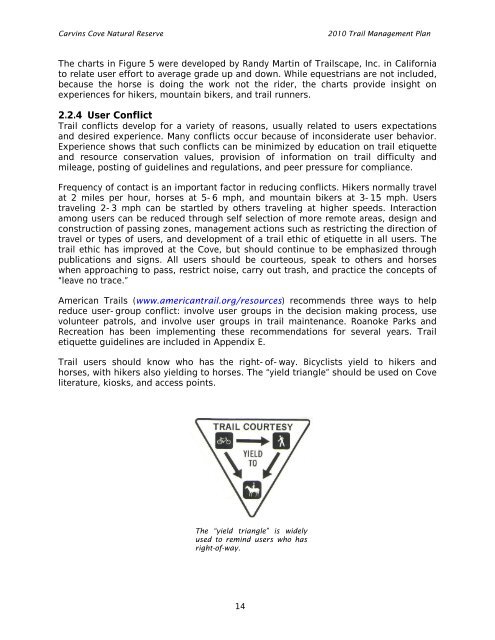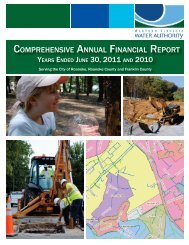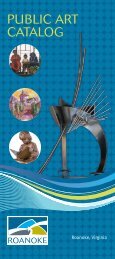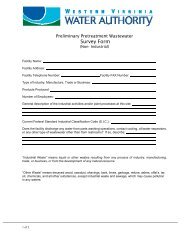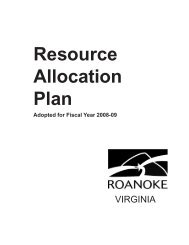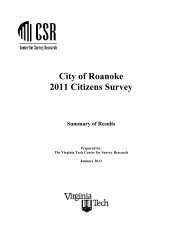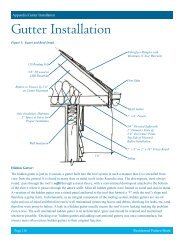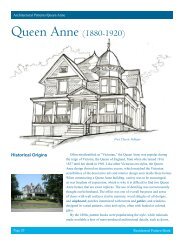Carvins Cove Trail Plan - Roanoke
Carvins Cove Trail Plan - Roanoke
Carvins Cove Trail Plan - Roanoke
Create successful ePaper yourself
Turn your PDF publications into a flip-book with our unique Google optimized e-Paper software.
<strong>Carvins</strong> <strong>Cove</strong> Natural Reserve<br />
2010 <strong>Trail</strong> Management <strong>Plan</strong><br />
The charts in Figure 5 were developed by Randy Martin of <strong>Trail</strong>scape, Inc. in California<br />
to relate user effort to average grade up and down. While equestrians are not included,<br />
because the horse is doing the work not the rider, the charts provide insight on<br />
experiences for hikers, mountain bikers, and trail runners.<br />
2.2.4 User Conflict<br />
<strong>Trail</strong> conflicts develop for a variety of reasons, usually related to users expectations<br />
and desired experience. Many conflicts occur because of inconsiderate user behavior.<br />
Experience shows that such conflicts can be minimized by education on trail etiquette<br />
and resource conservation values, provision of information on trail difficulty and<br />
mileage, posting of guidelines and regulations, and peer pressure for compliance.<br />
Frequency of contact is an important factor in reducing conflicts. Hikers normally travel<br />
at 2 miles per hour, horses at 5-6 mph, and mountain bikers at 3-15 mph. Users<br />
traveling 2-3 mph can be startled by others traveling at higher speeds. Interaction<br />
among users can be reduced through self selection of more remote areas, design and<br />
construction of passing zones, management actions such as restricting the direction of<br />
travel or types of users, and development of a trail ethic of etiquette in all users. The<br />
trail ethic has improved at the <strong>Cove</strong>, but should continue to be emphasized through<br />
publications and signs. All users should be courteous, speak to others and horses<br />
when approaching to pass, restrict noise, carry out trash, and practice the concepts of<br />
“leave no trace.”<br />
American <strong>Trail</strong>s (www.americantrail.org/resources) recommends three ways to help<br />
reduce user-group conflict: involve user groups in the decision making process, use<br />
volunteer patrols, and involve user groups in trail maintenance. <strong>Roanoke</strong> Parks and<br />
Recreation has been implementing these recommendations for several years. <strong>Trail</strong><br />
etiquette guidelines are included in Appendix E.<br />
<strong>Trail</strong> users should know who has the right-of-way. Bicyclists yield to hikers and<br />
horses, with hikers also yielding to horses. The “yield triangle” should be used on <strong>Cove</strong><br />
literature, kiosks, and access points.<br />
The “yield triangle” is widely<br />
used to remind users who has<br />
right-of-way.<br />
14


